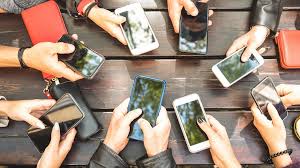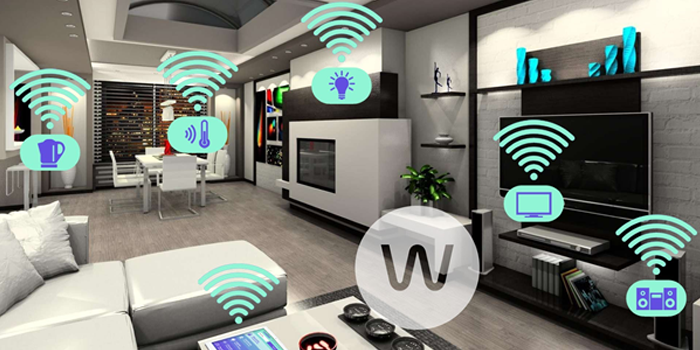The Evolution of smartphones and impacts on communication
Describing the smartphones and impacts have become an indispensable part of our daily lives, revolutionizing the way we communicate

In just a few decades, smartphones and impacts have transformed the way we communicate, revolutionizing not only the devices we use but also the very nature of human interaction.
From their humble beginnings as basic mobile phones to the powerful pocket-sized computers we have today, the evolution of smartphones has been nothing short of remarkable.
In this blog post, we will explore the journey of smartphones, from their inception to their profound impact on communication in the 21st century.
The Birth of Smartphones and Impacts
The story of smartphones begins with the humble mobile phone, which made its debut in the 1980s. These early mobile phones were bulky, expensive, and had limited functionality compared to today's standards. They were primarily designed for voice communication, and text messaging was a luxury feature.
However, as technology advanced, mobile phones became smaller and more affordable, paving the way for mass adoption. The late 1990s saw the introduction of more compact and stylish phones with rudimentary graphical displays. These devices laid the foundation for the evolution to come.
The Rise of Feature smartphones and impacts
The early 2000s witnessed the rise of feature phones, which represented a significant leap in mobile technology. These phones boasted more advanced features such as color screens, cameras, and basic internet access. Text messaging became more popular, allowing users to communicate in a new way beyond voice calls.
One of the defining moments in this era was the introduction of Nokia's popular "Snake" game, which captivated users and highlighted the potential for entertainment on mobile devices. Feature phones were becoming more than just tools for communication; they were turning into portable entertainment devices.
The Emergence of Smartphones
The true turning point in the evolution of mobile communication came with the advent of smartphones. In 2007, Apple unveiled the first iPhone, a device that would change the world forever. The iPhone combined a sleek design with a touch screen interface and access to the App Store, opening up a world of possibilities for users.
This marked the beginning of the smartphone era, characterized by devices that were not just for calls and texts but also for a wide range of applications and functions. Other manufacturers soon followed suit, and the market was flooded with various smartphone options, each with its own unique features and operating systems.
The Android Revolution
While the iPhone was a game-changer, it was not the only player in the smartphone arena. Google's Android operating system entered the scene, offering an open-source platform that allowed multiple manufacturers to produce Android-based smartphones. This led to a proliferation of choices for consumers and fierce competition in the market.
Android smartphones quickly gained popularity for their customization options, affordability, and wide variety of apps available on the Google Play Store. The rivalry between iOS and Android has continued to shape the smartphone landscape to this day, with each platform pushing the boundaries of technology.
The Featuresof smartphones and impacts
Over the years, smartphones have evolved in numerous ways, introducing a multitude of features that have transformed how we communicate:
Improved Cameras: Smartphones have become our primary cameras, with high-resolution sensors, multiple lenses, and advanced image processing capabilities. This has revolutionized the way we capture and share moments, making photography and videography accessible to everyone.
Messaging Apps: Text messaging has evolved into a plethora of messaging apps, such as WhatsApp, Facebook Messenger, and iMessage. These apps offer multimedia sharing, voice and video calls, and group chats, making communication more versatile and interactive.
Social Media Integration: Smartphones have made it easier than ever to connect with others through social media platforms like Facebook, Instagram, Twitter, and TikTok. These apps have reshaped how we share our lives, stay informed, and engage with communities.
Voice Assistants: The introduction of voice assistants like Siri, Google Assistant, and Alexa has transformed the way we interact with our devices. We can now perform tasks, answer questions, and control smart home devices using voice commands.
App Ecosystem: The App Store and Google Play Store have grown exponentially, offering a vast array of apps for productivity, entertainment, and communication. This app ecosystem has made smartphones indispensable for various aspects of daily life.
Video Calls: The COVID-19 pandemic accelerated the adoption of video calling apps like Zoom, Microsoft Teams, and FaceTime. Smartphones played a crucial role in enabling remote work, virtual gatherings, and staying connected during lockdowns.
Impact on Communication
The evolution of smartphones has had a profound impact on communication in several ways:
Instant Communication: Smartphones have made communication instant and convenient. We can reach anyone, anywhere in the world with a simple tap or swipe. This has transformed how we stay in touch with friends, family, and colleagues.
Global Connectivity: The internet connectivity of smartphones has made the world a smaller place. We can connect with people from different cultures and regions, fostering global communication and understanding.
Multimedia Communication: Text-based communication has expanded to include multimedia elements such as photos, videos, and GIFs. This has enriched our conversations and allowed us to express ourselves more creatively.
Social Interaction: Social media apps on smartphones have redefined social interaction. We can share updates, photos, and videos with our networks, enabling us to maintain relationships and connect with like-minded individuals.
Work and Productivity: Smartphones have enabled remote work and increased productivity by providing access to emails, documents, and collaboration tools on the go. We are no longer tied to our desks for work-related communication.
Emergency Communication: Smartphones have become essential tools for emergency communication. We can quickly call for help, share our location, and access critical information during emergencies.
Evolving Language: The way we communicate has evolved with smartphones. Emojis, GIFs, and memes have become integral parts of modern communication, adding emotional depth and humor to our conversations.
Challenges and Concerns
While smartphones have brought about numerous benefits, they have also raised certain challenges and concerns:
Digital Addiction: Excessive smartphone use can lead to digital addiction and screen time-related health issues. It's essential to strike a balance between online and offline life.
Privacy and Security: Smartphones store vast amounts of personal information, raising concerns about privacy and data security. Users must be vigilant about protecting their data.
Social Isolation: Paradoxically, the constant connectivity of smartphones can lead to feelings of social isolation as people spend more time interacting with screens than with each other in person.
Cyberbullying: The anonymity provided by smartphones can lead to cyberbullying and online harassment, posing risks to mental health, especially among young users.
Distraction: Smartphones can be distracting, leading to reduced productivity and impaired attention spans. It's crucial to manage notifications and set boundaries.
The evolution of smartphones has been a remarkable journey, transforming these devices from simple mobile phones into powerful communication tools that have reshaped the way we connect with one another.
From basic voice calls to instant messaging, social media, and beyond, smartphones have revolutionized the way we interact, work, and play.
As we continue to embrace these technological marvels, it is essential to use them mindfully, balancing the benefits of connectivity with the need for digital detox and privacy. Smartphones have undoubtedly changed the way we communicate, but the responsibility for using them wisely lies with us, the users.
What's Your Reaction?
















